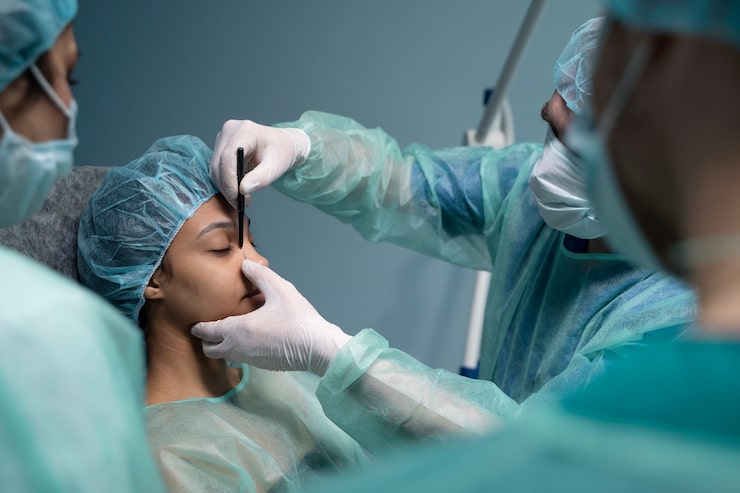Introduction: The Journey After Rhinoplasty
Undergoing rhinoplasty (nose job) is an exciting step toward achieving your aesthetic goals. While surgery is a crucial part of the journey, recovery plays an equally important role in determining the final results. How well you care for your nose in the weeks following surgery can significantly impact both healing and appearance.
In this blog, we’ll explore practical and medically recommended tips to help you recover comfortably, reduce swelling, and ensure your new look heals beautifully.
For insights on finding the right surgeon before your procedure, visit our detailed guide:
👉 Choosing the Right Cosmetic Surgeon for Rhinoplasty (Nose Job)
1. Follow Your Surgeon’s Post-Operative Instructions
Your surgeon’s aftercare plan is your most reliable roadmap to recovery. It’s designed based on your unique anatomy and surgical technique. Always:
- Take prescribed medications as directed.
- Avoid touching or blowing your nose.
- Keep the surgical site clean and protected.
- Attend all follow-up appointments for progress checks.
Ignoring instructions can lead to complications or delayed healing. Remember, your surgeon knows your procedure best.
2. Rest and Elevate Your Head
Rest is vital in the first few days after surgery. Sleep on your back with your head elevated on two or more pillows to minimize swelling and pressure around the nose.
Avoid sleeping on your side or stomach — this could shift your nasal bones or cause discomfort. A wedge pillow or adjustable bed can help maintain a comfortable elevated position.
3. Manage Swelling and Bruising
Swelling and bruising are normal during the initial recovery phase. To minimize them:
- Apply cold compresses around (not directly on) your nose and eyes.
- Stay hydrated and eat anti-inflammatory foods such as fruits and leafy greens.
- Avoid salty foods that may increase swelling.
Swelling may take several weeks to fully subside, but following these steps helps speed up the process and enhance your final results.
4. Avoid Strenuous Activities
Physical activity increases blood flow and can interfere with healing. Avoid:
- Heavy lifting
- Bending over
- High-intensity exercise
These activities can raise blood pressure and cause bleeding or swelling. Most patients can resume light exercise after 3–4 weeks, but always consult your surgeon before doing so.
5. Protect Your Nose from Pressure and Impact
Your nose will be delicate for several weeks following surgery. To protect it:
- Do not wear glasses or sunglasses directly on your nose until approved by your surgeon.
- Avoid tight clothing that needs to be pulled over your head.
- Be cautious around pets and children who might accidentally bump your face.
A small amount of care now ensures long-term results later.
6. Maintain a Healthy Lifestyle
Your overall health greatly influences your recovery. Support your body with:
- Balanced nutrition: Include protein, vitamins A and C, and zinc for tissue repair.
- Hydration: Drink plenty of water to flush out toxins.
- Avoid smoking and alcohol: These slow down healing and increase infection risk.
A healthy body heals faster and more beautifully.
7. Be Patient with the Process
Rhinoplasty results take time to reveal their final form. Initial swelling may make your nose look larger or uneven, but this improves steadily over months.
Typically, patients notice major changes after 3–4 weeks, while final results appear after 6–12 months. Patience is key — trust your surgeon’s process and allow your nose to heal naturally.
8. Attend All Follow-Up Appointments
Follow-up visits allow your surgeon to monitor your healing and make adjustments if necessary. These checkups ensure that:
- Stitches and splints are removed safely.
- Healing progress is on track.
- Any complications are caught early.
Consistent communication with your surgeon supports both confidence and comfort throughout your recovery journey.
Conclusion: Healing Is an Art
Rhinoplasty recovery is a gradual process that requires care, patience, and attention to detail. By following your surgeon’s guidance, maintaining healthy habits, and protecting your nose during the healing phase, you can achieve beautiful, lasting results.
If you haven’t yet chosen your surgeon, we strongly recommend reading our full guide on
👉 Choosing the Right Cosmetic Surgeon for Rhinoplasty (Nose Job).
Remember, your transformation doesn’t end with surgery, it begins with how you heal. A successful recovery ensures your rhinoplasty results look natural, refined, and uniquely yours.



